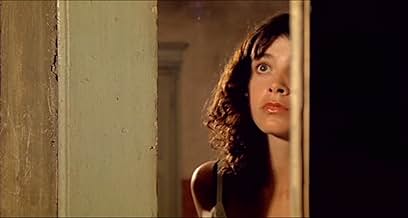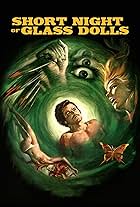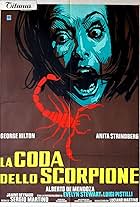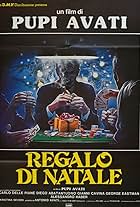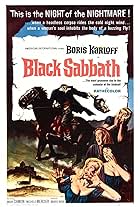IMDb RATING
7.0/10
6.2K
YOUR RATING
Stefano, a young restorer, is commissioned to save a controversial mural located in the church of a small, isolated village.Stefano, a young restorer, is commissioned to save a controversial mural located in the church of a small, isolated village.Stefano, a young restorer, is commissioned to save a controversial mural located in the church of a small, isolated village.
- Awards
- 1 nomination
Cesare Bastelli
- Car Driver
- (uncredited)
Storyline
Did you know
- TriviaThe house used as the laughing windows one was located in a small village called Malalbergo, close to Bologna. Already at the time of filming the house was crumbling so it was demolished not longer after filming had wrapped. However, for years people believed it still stood and often went looking for it.
- GoofsWhen Stefano leaves Copppola, mid-conversation, to check on Francesca, when he finds her sleeping, he returns momentarily to find Coppola gone without warning or trace. He then goes outside to look for him, and hears the front gate slam, assuming most likely that Coppola had left without saying good-bye. End of scene. Next time Coppola appears, he offers no explanation or apology and Stefano doesn't bring it up.
- ConnectionsFeatured in Fear at 400 Degrees: The Cine-Excess of 'Suspiria' (2009)
Featured review
Pupi Avati's 'The House With Laughing Windows' follows the character of Stefano, a painter who travels to a remote Italian village on a job to restore an unfinished painting depicting the persecution of St. Sebastian (who was a real Saint, by the way, only he was actually killed by arrows being shot into him, not by being stabbed with knives like the painting in the movie portrays). Upon arriving in the village, Stefano discovers that there is a lot more behind the mystery of the painting than he originally thought, and that someone will stop at nothing to make sure that Stefano does not complete the painting, further revealing the true mystery behind the town's bizarre secrets.
The movie opens with graphic, sepia toned imagery of a man being tortured in the exact same way as St. Sebastian is depicted in the painting. The genuinely creepy piano music that plays during the opening just further sets the unsettling mood for the mystery that lies ahead. The opening credits lead one to believe that the film is an all out blood bath, however, this is not the case. In fact, the most violently unsettling part of the film is the opening, that's not to say that the rest of the film doesn't contain violence, it just doesn't exist on the same level or extreme as the opening.
The rest of the film is a rather competent mystery done in true giallo fashion, and will keep you wondering what's going to happen next until the climactic finale. There are a few story elements in this movie that were either unexplained or not elaborated on, but I don't know if going as far as to call these incidents 'plot holes' would be completely correct. For instance, there is a girl Stefano is seeing at the beginning who just leaves town (disappears?) without a word. This had me thinking the whole movie that she was murdered and that her body would turn up at some point, when in fact you find out later in the film that she just simply left town, and was replaced by Stefano's next love interest, Francesca.
The movie is pretty tame in comparison to many giallo flicks like 'Tenebrae' or 'The New York Ripper', but the twists and turns should interest most fans of this sub-genre. Also, unlike most giallos, the film contains only a brief bit of nudity, but there is a scene where a woman is being forcefully molested that seems more exploitative than most scenes depicting nudity.
All in all I must say I was surprised at the quality of movie I saw. Not only was it a surprise that I haven't heard of this movie sooner, but it was also amongst some of the better plot driven giallo films I have personally seen. This movie was well paced, consisted of great camera-work and scenery, had great acting (to a non-speaker of Italian, anyway), and had a truly creepy and original plot. I recommend this film to anyone that is really into the Italian giallo sub-genre, as it may not hold the interest of the casual horror movie fan.
The movie opens with graphic, sepia toned imagery of a man being tortured in the exact same way as St. Sebastian is depicted in the painting. The genuinely creepy piano music that plays during the opening just further sets the unsettling mood for the mystery that lies ahead. The opening credits lead one to believe that the film is an all out blood bath, however, this is not the case. In fact, the most violently unsettling part of the film is the opening, that's not to say that the rest of the film doesn't contain violence, it just doesn't exist on the same level or extreme as the opening.
The rest of the film is a rather competent mystery done in true giallo fashion, and will keep you wondering what's going to happen next until the climactic finale. There are a few story elements in this movie that were either unexplained or not elaborated on, but I don't know if going as far as to call these incidents 'plot holes' would be completely correct. For instance, there is a girl Stefano is seeing at the beginning who just leaves town (disappears?) without a word. This had me thinking the whole movie that she was murdered and that her body would turn up at some point, when in fact you find out later in the film that she just simply left town, and was replaced by Stefano's next love interest, Francesca.
The movie is pretty tame in comparison to many giallo flicks like 'Tenebrae' or 'The New York Ripper', but the twists and turns should interest most fans of this sub-genre. Also, unlike most giallos, the film contains only a brief bit of nudity, but there is a scene where a woman is being forcefully molested that seems more exploitative than most scenes depicting nudity.
All in all I must say I was surprised at the quality of movie I saw. Not only was it a surprise that I haven't heard of this movie sooner, but it was also amongst some of the better plot driven giallo films I have personally seen. This movie was well paced, consisted of great camera-work and scenery, had great acting (to a non-speaker of Italian, anyway), and had a truly creepy and original plot. I recommend this film to anyone that is really into the Italian giallo sub-genre, as it may not hold the interest of the casual horror movie fan.
- How long is The House with Laughing Windows?Powered by Alexa
Details
- Release date
- Country of origin
- Official site
- Languages
- Also known as
- The House of the Laughing Windows
- Filming locations
- Production company
- See more company credits at IMDbPro
Contribute to this page
Suggest an edit or add missing content

Top Gap
By what name was The House with Laughing Windows (1976) officially released in India in English?
Answer





